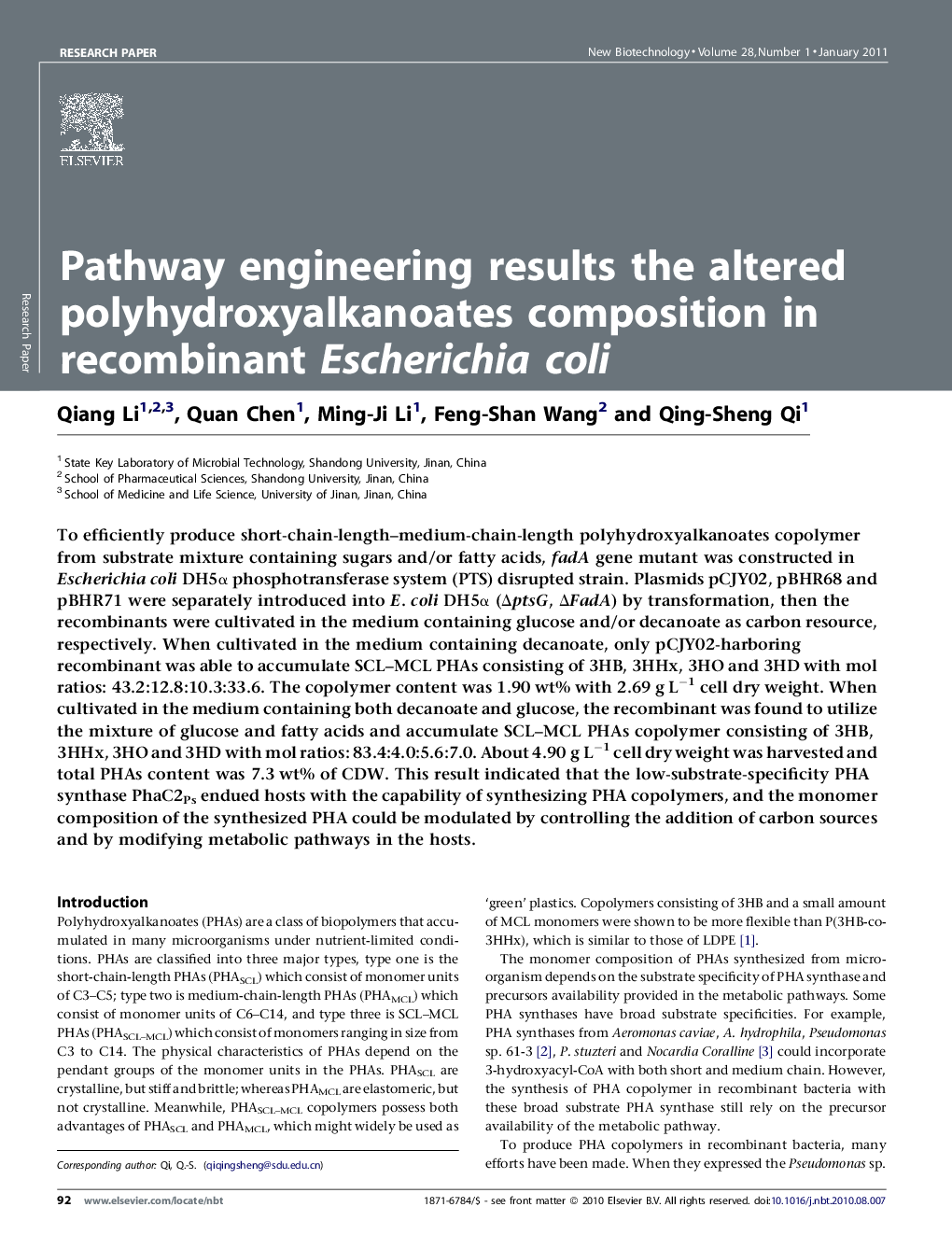| Article ID | Journal | Published Year | Pages | File Type |
|---|---|---|---|---|
| 33895 | New Biotechnology | 2011 | 4 Pages |
To efficiently produce short-chain-length–medium-chain-length polyhydroxyalkanoates copolymer from substrate mixture containing sugars and/or fatty acids, fadA gene mutant was constructed in Escherichia coli DH5α phosphotransferase system (PTS) disrupted strain. Plasmids pCJY02, pBHR68 and pBHR71 were separately introduced into E. coli DH5α (ΔptsG, ΔFadA) by transformation, then the recombinants were cultivated in the medium containing glucose and/or decanoate as carbon resource, respectively. When cultivated in the medium containing decanoate, only pCJY02-harboring recombinant was able to accumulate SCL–MCL PHAs consisting of 3HB, 3HHx, 3HO and 3HD with mol ratios: 43.2:12.8:10.3:33.6. The copolymer content was 1.90 wt% with 2.69 g L−1 cell dry weight. When cultivated in the medium containing both decanoate and glucose, the recombinant was found to utilize the mixture of glucose and fatty acids and accumulate SCL–MCL PHAs copolymer consisting of 3HB, 3HHx, 3HO and 3HD with mol ratios: 83.4:4.0:5.6:7.0. About 4.90 g L−1 cell dry weight was harvested and total PHAs content was 7.3 wt% of CDW. This result indicated that the low-substrate-specificity PHA synthase PhaC2Ps endued hosts with the capability of synthesizing PHA copolymers, and the monomer composition of the synthesized PHA could be modulated by controlling the addition of carbon sources and by modifying metabolic pathways in the hosts.
